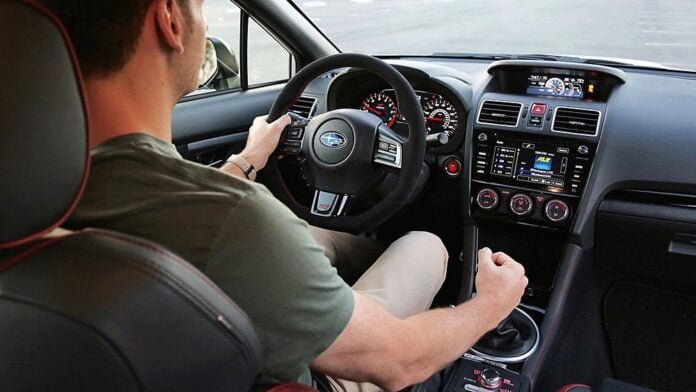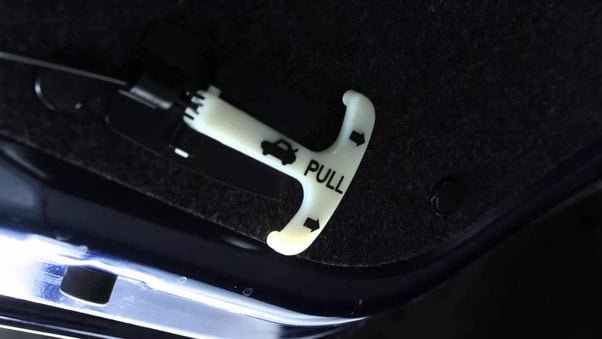Understanding the Risks of Parking on a Slope
Parking on a mountain pass or slope presents a distinctive set of challenges and risks, fundamentally differing from those encountered on flat roadways. One of the most significant dangers arises from the influence of gravity, which can cause vehicles to roll. This potential hazard necessitates heightened vigilance and precautionary measures to ensure safety. Large vehicles such as SUVs and pickup trucks are particularly susceptible due to their increased mass, which exacerbates the gravitational pull.
When a vehicle is parked on a slope without proper measures, the risk of it moving uncontrollably becomes pronounced. This can not only damage the vehicle itself but also pose severe risks to pedestrians, other vehicles, and property in the vicinity. To mitigate these risks, it’s imperative to take comprehensive steps such as engaging the parking brake fully and turning the wheels towards the curb or into the slope.

Additionally, the orientation of the parking—whether it be parallel or perpendicular—plays a critical role in managing these risks. Parallel parking on a slope is inherently more precarious than perpendicular parking due to the vehicle’s longitudinal alignment with the gradient. When parked parallel to the slope, the gravitational force acts along the length of the vehicle, making it more challenging to maintain its position securely. In contrast, perpendicular parking positions the vehicle in a manner that naturally resists rolling, reducing the potential for unanticipated movements.
Moreover, factors such as weather conditions and the surface type of the parking area can further compound the risks. Wet, icy, or uneven surfaces can decrease tire traction, making it easier for vehicles to slide even with brakes engaged. Therefore, understanding the inherent dangers and implementing correct parking techniques are paramount to ensuring safe and secure parking on slopes and mountain passes.
Essential Precautions Before Parking
Ensuring the safety of your vehicle and occupants when parking on a mountain pass or slope begins well before you put the car in park. The first step is to confirm that your vehicle is in optimal mechanical condition. Regular maintenance checks, including tire health, brake efficiency, and fluid levels, are crucial. Pay particular attention to the handbrake and parking brake systems, as they are your primary tools in preventing rollback on an inclined surface.
Testing the parking brake should be a routine part of your vehicle checks. Engage the parking brake fully and gently try to move the vehicle to ensure the brake holds firm. If there is any doubt about its efficacy, it is advisable to consult a mechanic before heading into mountainous terrains.
Understanding upshift and downshift patterns is essential for maintaining control of your vehicle on slopes. When ascending a slope, downshifting can provide the necessary torque and prevent the engine from overexerting. Conversely, upshifting while descending helps control vehicle speed without over-relying on the brakes, which can lead to overheating and brake fade. Learning the specifics of your vehicle’s gear system is indispensable for safely navigating steep inclines.
The orientation of your vehicle’s wheels also plays a critical role in preventing accidents. When parking on an uphill slope, turn your wheels away from the curb. This way, if the brakes fail, the vehicle will roll into the curb, rather than down the slope. On a downhill slope, turn the wheels toward the curb. For slopes without curbs, point your wheels away from the road edge.
Modern parking aids and technologies significantly bolster safety. Features such as hill start assist, automatic parking brakes, and descent control systems can make parking on a slope more manageable. These technologies provide added layers of security by ensuring your vehicle remains stationary until you are ready to move again.
Incorporating these essential precautions before parking on a mountain pass or slope can greatly mitigate risks, ensuring a safer and smoother experience.
Techniques to Safely Park on an Uphill Slope
When confronted with the task of parking your vehicle on an uphill slope, it is essential to take specific precautions to ensure safety and avoid potential mishaps. The orientation of your vehicle and the positioning of your tires are critical in preventing your car from sliding. Here are some key techniques to employ:
First and foremost, always steer the front wheels away from the curb when parking facing uphill. This reduces the risk of your vehicle rolling into the roadway by ensuring that if it does move, the wheels will make contact with the curb and stop the vehicle.
Engaging the parking brake is another crucial step. This should be done after you have positioned the wheels correctly. The parking brake provides additional security by locking the rear wheels in place, reducing the likelihood of an unintended roll.
It is vital to leave your vehicle in the correct gear. For those with a manual transmission, place the car in first gear or reverse. For an automatic transmission, shift into park mode. This gear positioning acts as an added layer of protection by using the engine’s resistance to prevent movement.
Wheel chocks are a practical addition for enhanced safety when parking on a steep incline. If available, position these wedges tightly against your tires to further prevent any unwanted movement. This is especially useful for prolonged parking or extreme slopes.
Using the curb as a physical barrier is another effective strategy. By allowing the tires to rest against the curb, you can leverage this obstruction to halt any potential slide. This method is simple yet significantly contributes to vehicle stability.
Implementing these techniques not only safeguards your vehicle but also ensures the safety of others by reducing the risk of accidents due to uncontrolled vehicle movement. Always remember that a combination of proper gear usage, parking brake engagement, wheel positioning, and additional safeguards like wheel chocks create a reliable parking setup on an uphill slope.
Techniques to Safely Park on a Downhill Slope
Parking on a downhill slope presents unique challenges, primarily due to the increased influence of gravity. Properly positioning your tires is an essential first step. With your tires turned towards the curb, you create a physical barrier that helps to prevent your vehicle from rolling downhill. This technique is straightforward but highly effective, and it’s a fundamental practice for safely parking on any slope.
Moreover, utilizing the parking brake is crucial when parking on a downhill slope. The parking brake adds an additional layer of security by ensuring that the wheels are locked, further preventing unwanted movement. It is a best practice to engage the parking brake before shifting the vehicle into park mode (automatic transmission) or leaving it in reverse gear (manual transmission). This sequence allows the brake to bear the weight of the vehicle, instead of the transmission, reducing wear and tear on the latter.
Aside from these basic steps, employing additional security measures can significantly enhance safety. Wheel chocks, for example, provide an extra safeguard by physically blocking the wheels, effectively preventing any potential vehicle movement. These chocks are especially useful if you need extra assurance or when parking on steeper inclines.
Double-checking all locks and brakes is another indispensable step to ensure your vehicle remains stationary. By verifying that every safety measure is correctly in place, you minimize the risk of any oversight, which could otherwise lead to hazardous situations.
In sum, parking on a downhill slope requires meticulous attention to detail. By turning your tires towards the curb, consistently using the parking brake, selecting the appropriate gear, and leveraging additional security measures like wheel chocks, you can confidently secure your vehicle on even the steepest of declines.




